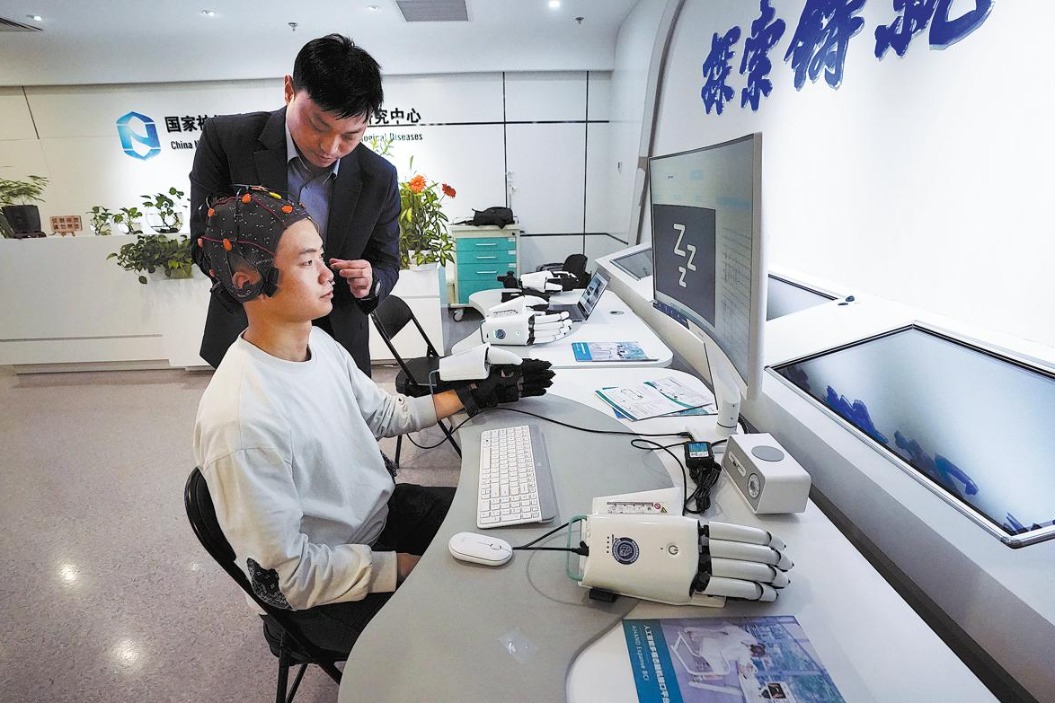Comm operator's TeleAI surmounts dialect challenge
By MA SI | China Daily | Updated: 2024-06-06 09:57

In a groundbreaking development, TeleAI, the artificial intelligence research division of China Telecom, has unveiled the industry's first advanced speech recognition model capable of understanding and processing over 30 Chinese dialects.
This large language model, known as Xingchen in Chinese, addresses a significant barrier in customer service, where millions of daily calls, especially from elderly users in remote regions, are made in local dialects that traditional AI systems and customer service representatives struggle to understand.
With approximately 20 percent of China's population not fluent in spoken Mandarin Chinese, this advancement aims to bridge the communication gap, ensuring equitable access to digital services for all, China Telecom said.
TeleAI has tackled the challenge of creating an LLM that breaks away from conventional approaches, which typically limit recognition to a single dialect. By incorporating Cantonese, Shanghainese, Sichuanese and Wenzhounese, among others, the Xingchen model marks a significant leap forward in natural language processing technology, China Telecom said.
This is particularly crucial for elderly residents and those in less-developed regions, who rely heavily on their native dialects for communication, the company added.
Traditionally, dialect research has been a labor-intensive process, reliant on subjective human assessment and annotation, making comprehensive documentation difficult. AI, with its ability to systematically and efficiently catalog and analyze linguistic data, offers a transformative solution. TeleAI said it has already amassed a database exceeding 30,000 hours of high-quality dialect speech, positioning itself as a leader in this field.
The Xingchen speech recognition model is currently being piloted across several regions including Fujian, Jiangxi, Beijing, the Guangxi Zhuang autonomous region and the Inner Mongolia autonomous region. In these provinces, regions and cities, China Telecom's intelligent customer service has integrated this model, enhancing its ability to comprehend and respond to calls in 30 dialects.
This integration has resulted in the system handling approximately 2 million calls daily with improved naturalness and fluency. Furthermore, the Xingchen model powers a platform, covering 31 provincial-level regions and managing 1.25 million calls per day, significantly enhancing customer service efficiency. The model is also deployed in various government service hotlines, facilitating better customer service and smarter governance.
The LLM offers a clue into how China Telecom is working to sharpen its technological edge.
Ke Ruiwen, chairman of China Telecom, emphasized the company's commitment to ongoing technological innovation, leveraging its integrated digital infrastructure.
Ke said the advancement of cloud computing and AI models is a collaborative effort with partners across the industry, focusing on cutting-edge technologies and open cooperation.
China Telecom's cloud computing business, whose English name is State Cloud, has crossed a threshold in intelligent cloud development and entered a new stage of development, Ke said.
So far, the State-owned Assets Supervision and Administration Commission has promoted 36 centrally owned enterprises to build cloud computing platforms in 40 industries, and China Telecom's cloud computing infrastructure supports 24 out of the 40 sectors.
Gou Ping, vice-chairman of SASAC, said SOEs have been growing their presence in computing power, data and algorithms, which effectively support the development of the digital economy and the construction of a digital China.
In May, China Telecom also launched direct-to-phone satellite connectivity in the Hong Kong Special Administrative Region. With the theme of "Mobile Always Online, Never Lost Contact", the launch officially announced that relying on the capability of the Tiantong-1 satellite system, China Telecom said it would provide direct-to-phone satellite connectivity service to users in Hong Kong.
China Telecom will take Hong Kong as the first station to start internationalized overseas operating services of the satellite system. This is a breakthrough milestone for China's satellite communication industry in the internationalization process, the company added.
Chen Lidong, director of the emergency communications center at the Ministry of Industry and Information Technology, said China Telecom has made progress in recent years in firmly implementing the Belt and Road Initiative, deepening international cooperation and promoting high-quality infrastructure interconnection.
























